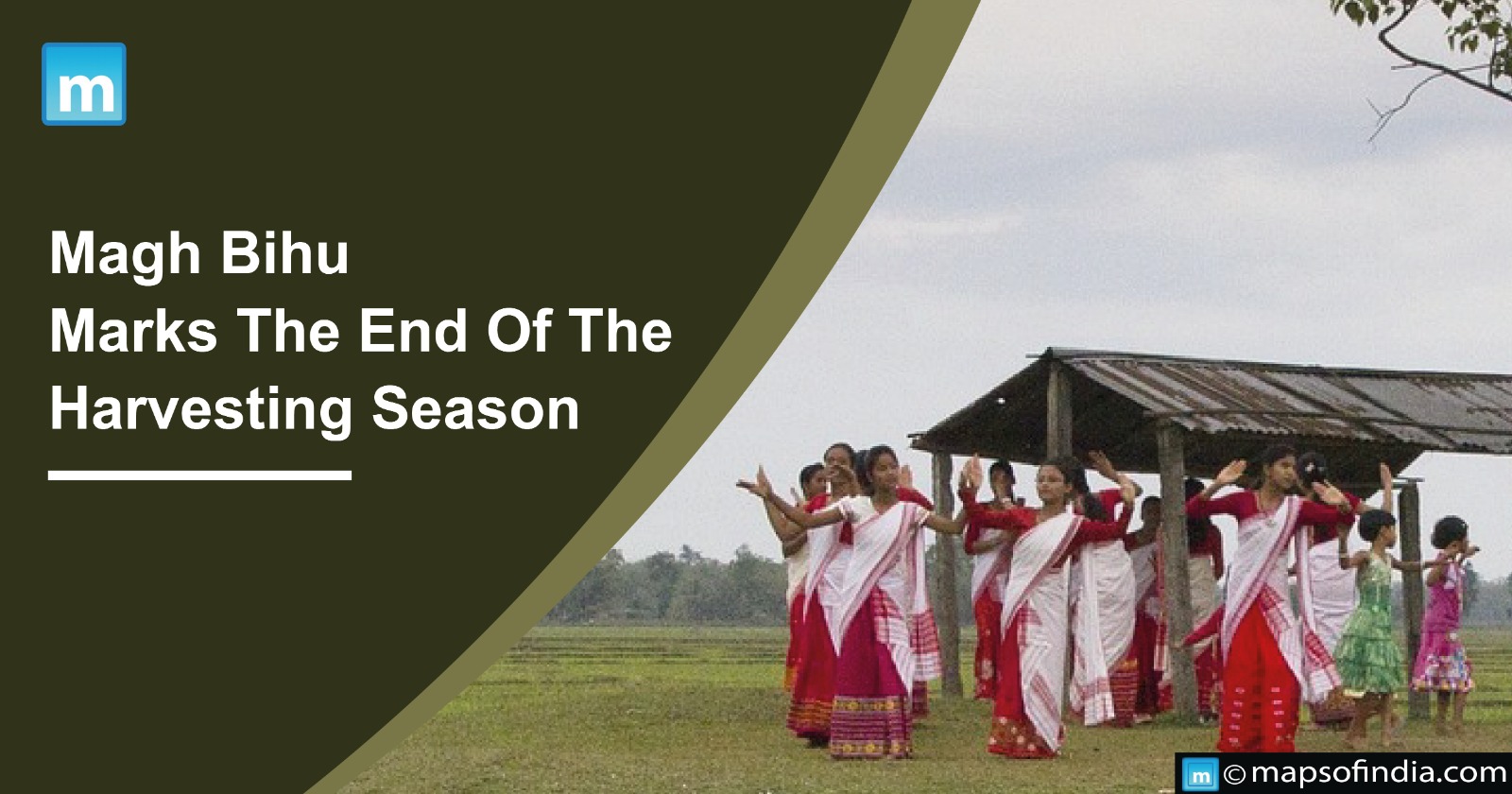Maghar Domahi, or Magh Bihu is a harvest festival celebrated in Assam, North-East India. It is a festival celebrated in Magh, i.e., January-February, which marks the end of the harvesting season. The Indo-Aryan and Tibeto-Burman festivals and cultures Magan of Kachari developed this festival. It is also considered a festival celebrating a slight shift in the earth’s rotational axis and brings the end of winter and the beginning of spring.
There are three Bihu celebrated yearly by the community. The Bhogali Bihu is a term that is derived from the word bhog. It refers to enjoyment and eating. According to its name, this festival involves plenty of food, dance, and song. The ceremonial conclusion consists of a bonfire made of green bamboo, hay, firewood, and dried banana leaves.
Rituals involved in the festival
Bonfires and feasts are mainly involved to celebrate the festival. Young people of the community make straight-standing makeshift huts, which are known as Bhelaghar and Meji. These are made of leaves, thatch, and bamboo. The food prepared for the feast is eaten in Bhelaghar. The huts are then burned the following day. The celebration of Magh Bihu also involves Assamese games such as buffalo fighting and tekeli bhonga. During the Magh Bihu, people make rice cakes with names such as Til Pitha, Sunga Pitha, etc., and sweets made of coconut.
On the first day of Magh Bihu, the Bihu Eve, known as Uruka, means “to end”. It signifies the end of the Pausha month, the harvesting season. The women of the folk prepare food like Pitha, Chira, Laru, and curd for the next day. And at night, a feast is organized, which is called Bhuj.
The day of Bihu begins with a post-harvesting ceremony called “Meji”. In this ritual, bonfires are burned in the fields when people pray to their ancestral gods for blessings. As a tradition, people take a bath and then set a bonfire. The Meji and Bhoral are worshiped by offering rice cakes, rice beers, chicken, pitha, chira, horoom, akhoi, curd, and other eatables. The Meji and Bhelaghar are burned at the end. The bonfire’s ashes are used in the crops and trees to increase the fertility of the gardens or fields.
Different forms of the festival
It is an auspicious day of the Hindu lunar year. It is known as the Makar Sankranti. It means the day when the sun begins its northward journey, called Uttarayan.
The Sun God is worshiped on this day around the country. Different states name it differently. In Tamil Nadu, it is called Pongal, Makara Sankranti in Kerala, Maghi Saaji in Himachal Pradesh, Sakrat in Haryana, Sukarat in Central India, Sakraat in Rajasthan, Maghi Sangrand in Punjab, Uttarain or Maghi Sangrand in Jammu, Ghughuti in Uttarakhand, and others.
